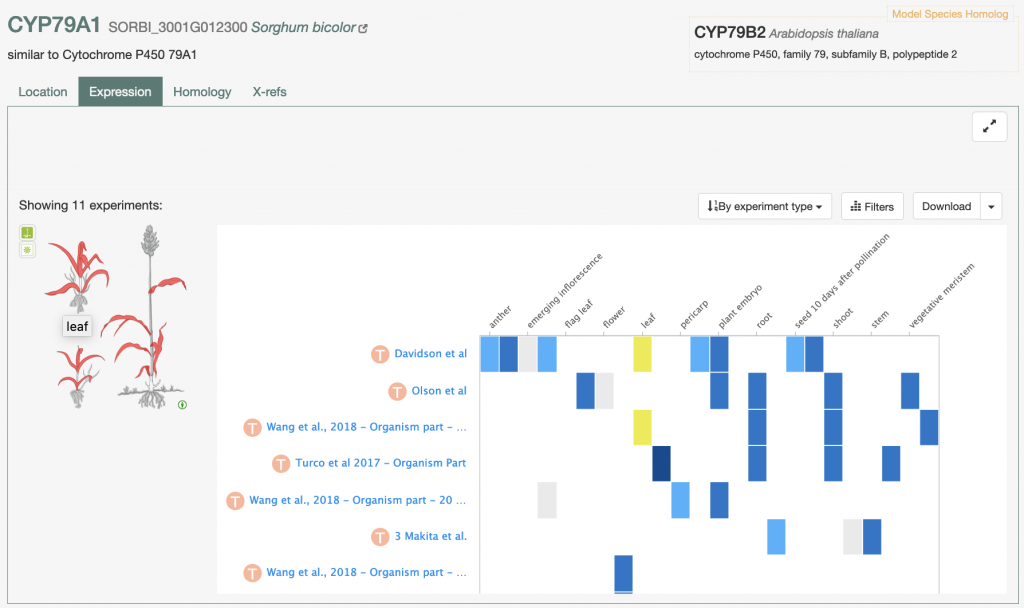Gene Expression affecting dhurrin production in domesticated Sorghum bicolor versus Australian wild Sorghum macrospermum
Domesticated sorghum leaves contain high amounts of dhurrin, which deters herbivores but is toxic to livestock. The production of dhurrin increases during drought conditions. Australian wild sorghum species have limited amounts of dhurrin in the above ground plant tissue; cyanogenesis of wild species under water-stress conditions were regulated in a different manner when compared to domestic species. Researching the gene expression profiles of cyangenosis, the production of cyanogenic glucoside dhurrin, is of great interest to both biologists and breeders for its potential in creating livestock safe sorghum.
To investigate the differential gene expression profiles of cyangenosis in the domesticated species Sorghum bicolor and the Australian native wild species Sorghum macrospermum, researchers at the University of Queensland, with support from scientists at Australian Grains Genebank, Monash University, and University of Copenhagen, grew both species in greenhouse-controlled water-stress conditions and used RNA-Seq to measure gene expression (Ananda et al. 2022). By comparing the leaves of the two species of sorghum the researchers not only showed that in S. bicolor dhurrin was present at 1000 times the quantity of that found in S. macrospermum, but also increased under water-stress conditions and decreased with plant maturity, while in S. macrospermum the levels were consistently low. The study identified genes key to dhurrin synthesis that were highly expressed in S. bicolor (CYP79A1, CYP71E1 and UGT85B1). In addition, the researchers showed that DHR and HNL, which are responsible for “encoding the dhurrinase and α-hydroxynitrilase catalyzing bio-activation of dhurrin” were also highly expressed in S. bicolor. By identifying these genes the researchers opened up the opportunity to introgress traits from S. macrospermum into domesticated species to create acyanogenic, livestock safe sorghum lines.
“Australia is the home of 70 % of the wild Sorghum species with untapped genetic resources. Our study shed the lights on identification of acyanogenic wild sorghum species. These wild species will be the keys of developing sorghum genotypes with low animal toxicity and also meeting the challenges of food, feed, fibre and fodder to adapt to a changing climate.” – Robert Henry and Kalpani Ananda
SorghumBase example:

Reference
Ananda, G.K.S., Norton, S.L., Blomstedt, C., Furtado, A., Moller, B.L., Gleadow, R., and Henry, R.J. Transcript profiles of wild and domesticated sorghum under water-stressed conditions and the differential impact on dhurrin metabolism. Planta 255, 51 (2022). https://doi.org/10.1007/s00425-022-03831-4. Read more
Related Project Websites




